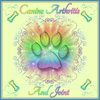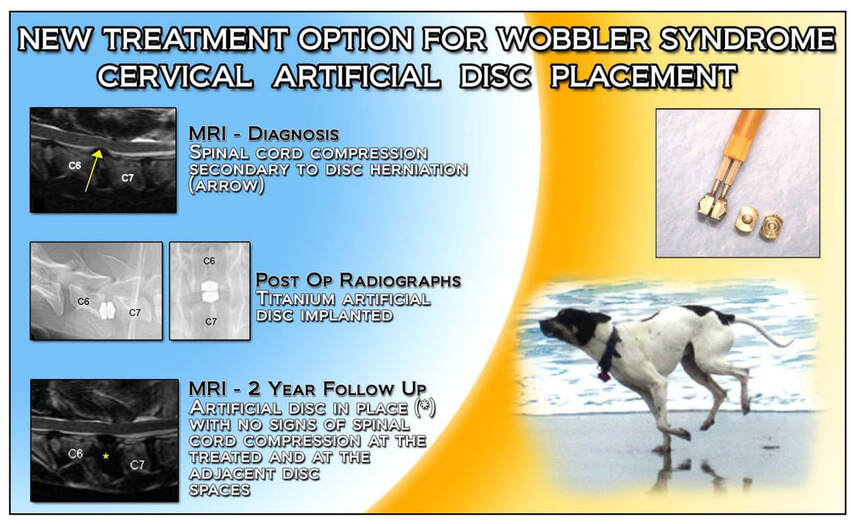|
If Your Dog is a Large or Giant Breed, Stay Alert for These Symptoms
By Dr. Becker Wobbler syndrome is a disease of the cervical spine in the area of the neck, in which the spinal cord and spinal cord nerve roots are compressed. This compression leads to neck pain and neurological problems like the wobbly walk dogs with the syndrome exhibit. This wobbly gait involves taking short, floating steps with the front legs and a swaying or wobbly movement of the hind legs. Wobbler syndrome is a very common cause of neurologic problems in large and giant breed dogs. Most people just call the condition Wobbler's, but medical terms used to describe it include spondylomyelopathy, cervical vertebral instability, cervical vertebral malformation, and cervical spondylopathy. Causes of Wobblers in At-Risk Breeds Wobbler syndrome develops in one of two ways: · Slipped, bulging or herniated discs · Bony malformation in the vertebral canal surrounding the spinal cord Either of these problems can cause the spinal cord and nerve root compression seen in Wobblers dogs. The slipped disc presentation is most commonly seen in Dobermans. Compression caused by bony vertebral malformation is most often seen in other large and giant breeds, including Great Danes, Rottweilers, mastiffs, the Weimaraner, German shepherds, Irish wolfhounds, Bernese mountain dogs and Swiss mountain dogs. Wobbler syndrome is especially prevalent in Dobermans, Great Danes and mastiffs. Dobermans tend to develop the disease in middle age -- six to seven years old is average. In Great Danes and mastiffs, the problem is most often seen in dogs under the age of three, and these two breeds usually develop Wobblers from a bony vertebral malformation rather than a disc problem. |
|
Symptoms of Wobbler Syndrome
Besides the wobbly gait and neck pain, other symptoms of Wobbler's can include: · Limb weakness and difficulty rising after sitting or lying down · Partial or complete limb paralysis · Muscle loss through the shoulders · Worn or scuffed nails from dragging the foot · Increased extension of limbs Wobblers is usually a slow, progressive disease except in cases of acute trauma when it develops very rapidly. Weakness, loss of muscle coordination and toe dragging usually begin in the rear limbs. Dogs with these symptoms often stand or walk in a crouched position with the head held very low. There's usually intense neck pain that accompanies this presentation. The condition progresses to involve the front limbs, but usually with less severe symptoms. |
|
Diagnosis and Traditional Medical Management of Wobbler's
A definitive diagnosis of Wobbler syndrome is made through x-rays, myelographs, a CT scan or MRI. X-rays can rule out bony malformations but cannot diagnose disc disease. Myelography, which are x-rays taken after dye is injected around the spinal cord, as well as CT scans and MRI's, allow visualization of the compressed spinal cord. The MRI is generally considered the best and safest test to diagnose Wobblers. The two primary treatments for Wobblers are medical management and surgery. Medical management usually involves medications to reduce inflammation and spinal cord swelling. A study of over 100 dogs at the Ohio State University College of Veterinary Medicine showed that 50 percent of Wobblers dogs improve with medical management. About 30 percent remain stable. And for the remaining 20 percent, the condition continues to worsen. Medical management also means a dog's activity must be severely restricted. Often cage rest is recommended. No collars or leashes should be placed around these dogs' necks – harnesses must be used. Medical management is typically attempted with older dogs with mild symptoms, and dogs with multiple locations of spinal cord compression. My Choice of Treatment: Physical Rehabilitation I believe the best therapeutic approach for Wobbler syndrome dogs is rehabilitation – essentially dog physical therapy. Aqua therapy, laser therapy and acupuncture including electro-acupuncture can be beneficial for these dogs. There are also natural anti-inflammatories, Chinese herbs and antioxidants that cross the blood-brain barrier to help reduce trauma to the central nervous system. But nothing replaces the benefits of physical rehabilitation for canine Wobbler patients. |
|
Surgery for Wobblers
If medical management and/or rehabilitation and complimentary therapies are unsuccessful in bringing relief to a Wobblers dog, the only other option to improve quality of life is surgery. The type of surgery performed depends on the underlying cause of the spinal cord compression. There are several things to consider when deciding if surgery makes sense, including what technique might be most effective, the number and severity of lesions in the spine, the dog's age, and other concurrent disease processes. There are a number of surgical approaches to Wobbler syndrome. A dorsal laminectomy is often the surgery of choice to enlarge a very narrow or malformed spinal canal. If a disc is compressed, a ventral slot procedure may be performed to remove the disc material. There's also an exciting new surgical technique called cervical arthroplasty for disc-associated Wobblers. This new technique involves implanting an artificial disc in place of the diseased disc, and the procedure can be used in multiple disc spaces. Dogs who have undergone this new procedure have had terrific short and long-term results, so this is definitely a promising new technique to bring relief to patients with the disc-related version of Wobbler syndrome. Helping Your Large or Giant Breed Dog Avoid Wobbler Syndrome If you own an at-risk breed for developing Wobblers, I recommend proactive cartilage and disc support or over-the-counter supplements like glucosamine sulfate and MSM -- very early in your dog's life. As your dog ages, I recommend progressively more intense support, including egg shell membrane and Adequan. Maintenance chiropractic care is always a good idea, along with consistent use of a harness instead of collars that place stress on the neck. Helping your pet maintain excellent muscle tone is also very important. All these steps can help reduce your large or giant breed dog's risk of developing Wobbler syndrome. |
Computerized Dobermans Gait with Wobblers
**Canine Arthritis And Joint is intended for informational, educational and entertainment purposes only and is not a substitute for medical advice, diagnosis or treatment. Do not attempt to self-diagnose or treat any health condition. You should always consult with a healthcare professional before starting any diet, exercise or supplementation program, before taking any medication, or if you have or suspect your pet might have a health problem. The opinions expressed by Canine Arthritis And Joint are not to be replaced for medical care. This website and the information contained herein have not been evaluated by the Food and Drug Administration. The information and opinions on Canine Arthritis And Joint are not intended and cannot be used to diagnose, treat, cure, or prevent any disease. This applies to people and pets!
This site uses affiliate links such as banners you may see that allows for paid commissions.
This site uses affiliate links such as banners you may see that allows for paid commissions.
Canine Arthritis And Joint © Copyright 2015-2024
Designed By Paw Prints Web Design
Designed By Paw Prints Web Design









